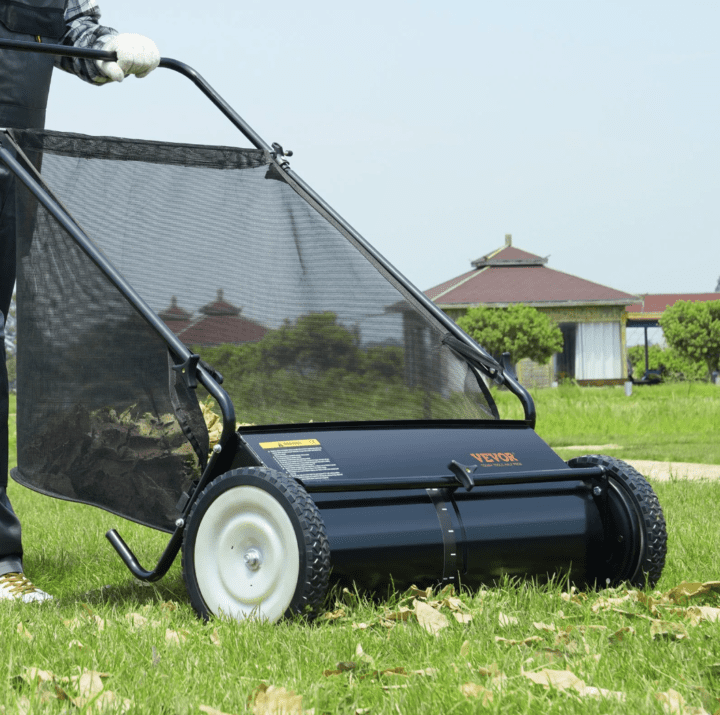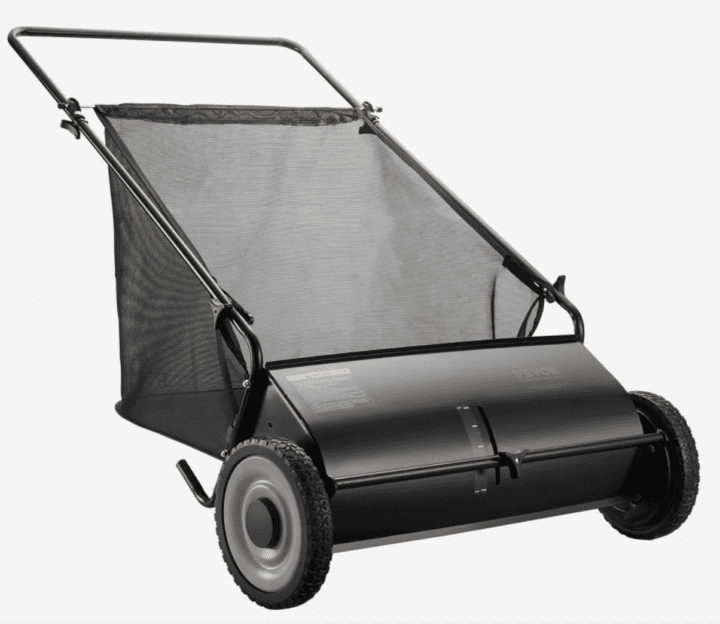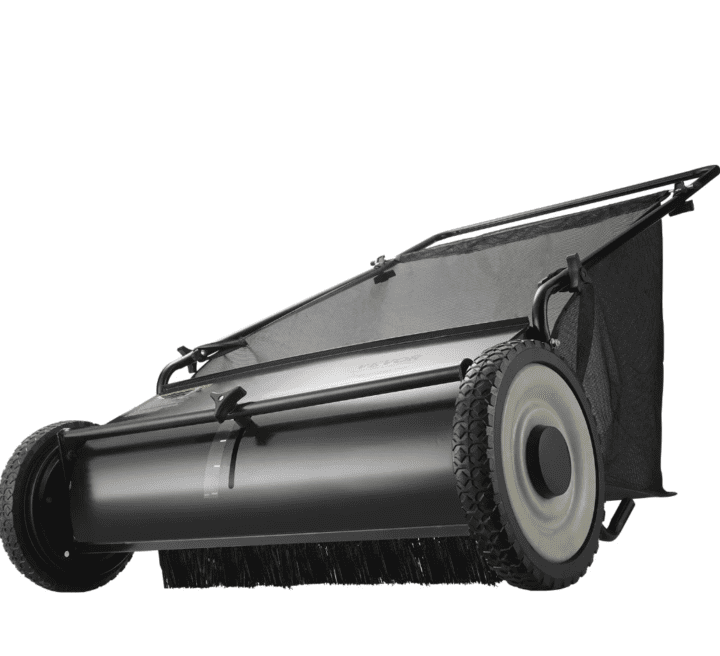How to Shop Online Furniture Stores
Are you one of the many people that doesn’t like to order large items online? While the thought of doing so might have been anxiety-inducing in the past, today’s global marketplace has eliminated such...
Fall cleanup doesn't have to be a back-breaking chore that takes hours of raking and bagging leaves. A push leaf collector offers a simple solution that transforms yard work from tedious manual labor into an efficient task. These tools use spinning brushes to gather leaves, twigs, and debris into a collection bag as you walk behind them.
Push leaf collectors eliminate the need for constant bending and raking while covering large areas quickly and effectively. Unlike traditional rakes or even some powered equipment, these machines work quietly and don't require fuel or electricity. They also provide better results than basic tools, picking up debris that rakes often miss while being gentler on grass than heavy machinery.

Many homeowners discover that switching to a push leaf collector saves both time and physical strain during fall cleanup. Even those with an anti-push leaf collector mindset often change their opinion once they experience the convenience and efficiency these tools provide for maintaining a tidy yard.
Fall cleanup becomes much easier when homeowners use the right tools. A push leaf collector stands out as one of the most effective options for yard work during autumn.
These tools save significant time compared to traditional rakes. Instead of bending over repeatedly, users simply push the collector across their lawn. The device gathers leaves into its collection chamber automatically.
Physical strain drops dramatically with push collectors. People with back problems or mobility issues find these tools especially helpful. The ergonomic design reduces the need for constant bending and lifting.
Large capacity makes these collectors ideal for bigger yards. Many models hold over 100 liters of leaves. This means fewer trips to empty the collection chamber during leaf clean up sessions.
Push collectors work on various surfaces effectively. They handle grass, gravel paths, and paved areas with equal success. The adjustable height settings accommodate different terrain types.
Key advantages include:
The wide collection path covers more ground quickly. Most push collectors span 26 to 30 inches across. This width allows users to clear large areas in fewer passes.
These tools also protect lawn health better than heavy machinery. The lightweight design prevents soil compaction that can damage grass roots during leaf collection activities.

Push leaf collectors transform yard work by eliminating the need for raking and multiple trips to disposal areas. These tools combine sweeping and collection in one smooth operation, making fall cleanup faster and less physically demanding.
Traditional raking requires homeowners to gather leaves into piles, then bag or haul them away in separate steps. A push lawn sweeper completes both tasks simultaneously as users walk across their yard.
Most models can clear a 21 to 26-inch path with each pass. This width allows users to cover large areas quickly without making countless trips back and forth.
The spinning brushes work continuously as the sweeper moves forward. They pick up leaves, grass clippings, and small debris without stopping or slowing down.
Users can empty the collection bag when full and continue working. This eliminates the time spent moving between rake piles and reduces the total cleanup time by up to 60 percent compared to manual raking.
Push leaf collectors require minimal physical effort compared to traditional raking. Users simply walk behind the unit at a comfortable pace while the brushes do the work.
Most models feature adjustable brush height settings. This allows the sweeper to work effectively on different grass types and uneven terrain without scalping the lawn.
The lightweight design makes maneuvering around trees, flower beds, and other obstacles simple. Users can easily change direction or navigate tight spaces.
Push lawn sweepers typically require no fuel, oil changes, or electrical cords. This eliminates maintenance concerns and allows immediate use whenever needed.
The collection bags detach quickly for emptying. Most bags hold 5 to 7 cubic feet of debris, reducing the frequency of stops during cleanup sessions.
Push leaf collectors help reduce yard waste while creating valuable materials for lawn health. These tools turn fall cleanup into an opportunity to support sustainable yard care practices.
Push leaf collectors significantly cut down the amount of yard debris that ends up in landfills. Traditional raking methods often lead homeowners to bag leaves for curbside pickup.
This creates unnecessary waste in municipal systems. Collected leaves take up space in garbage trucks and disposal sites.
A push leaf collector changes this pattern. It gathers leaves efficiently so they can stay on the property. Homeowners can direct collected leaves straight to a compost bin.
The composting process transforms leaves into rich soil material. This eliminates the need for plastic leaf bags. It also reduces the carbon footprint from waste collection trucks.
Key waste reduction benefits:
Collected leaves provide natural nutrients that grass and soil need. When leaves break down, they release nitrogen, phosphorus, and other essential elements.
Push leaf collectors make it easy to distribute these materials where they work best. Homeowners can spread thin layers of collected leaves across bare soil areas.
The leaves act as natural mulch. They help soil hold moisture during dry periods. This reduces the need for frequent watering.
Lawn health improvements include:
Collected leaves also suppress weed growth naturally. They block sunlight that weeds need to germinate. This reduces the need for chemical herbicides on the lawn.

Push leaf collectors offer distinct advantages over traditional raking and powered equipment. Manual methods require more physical effort, while powered tools cost more and need fuel or electricity.
Traditional leaf rakes remain the most basic tool for fall cleanup. They work well for small areas and light leaf coverage. However, raking creates significant physical strain on the back and arms.
A standard rake requires users to bend repeatedly and lift heavy piles of wet leaves. This motion often leads to muscle soreness and fatigue. The process takes much longer than other methods.
Push lawn sweepers eliminate the bending and lifting that comes with manual raking. They collect leaves directly into attached bags as users walk behind them. This reduces back strain and speeds up the cleanup process.
Key differences:
Leaf blowers and leaf vacuums use gas or electric power to move leaves quickly. A backpack leaf blower can clear large areas in minutes. These tools generate strong air streams that push leaves into piles.
Powered equipment costs more than push collectors. Gas models need fuel and regular maintenance. Electric versions require charging or extension cords. The noise levels often disturb neighbors.
A lawn sweeper operates silently and needs no fuel or electricity. It collects leaves directly instead of just moving them around. Push models work well on flat surfaces but struggle with wet or matted leaves.
Equipment comparison:
| Maintenance Task | Frequency |
| Empty collection bag | After each use |
| Clean height adjustments | Weekly |
| Brush cleaning | Every 2-3 uses |
| Oil moving parts | Monthly |
A push leaf collector transforms fall cleanup from a tedious chore into an efficient task. These tools save time and reduce physical strain compared to traditional raking methods.
The right leaf collector depends on three main factors:
Push leaf collectors offer consistent performance throughout the fall season. They handle various debris types including leaves, twigs, and grass clippings effectively.
Most models achieve 70% pickup rates on the first pass. This means fewer trips across the yard and faster cleanup times.
The investment pays off through reduced cleanup hours and less physical effort. Homeowners can maintain tidy yards without the back-breaking work of traditional methods.
These tools work well for both occasional users and those who clean up leaves regularly. The convenience factor makes fall maintenance more manageable for people of all ages and fitness levels.